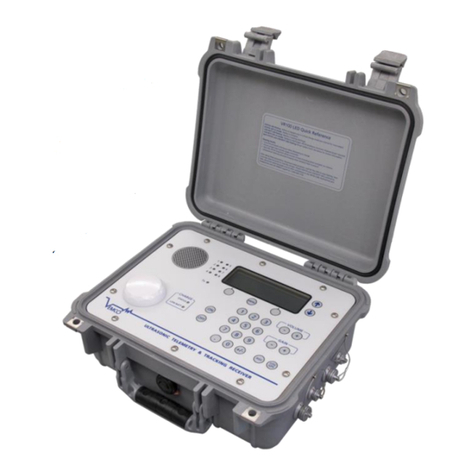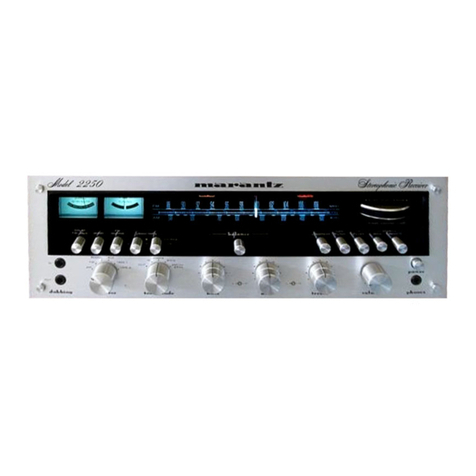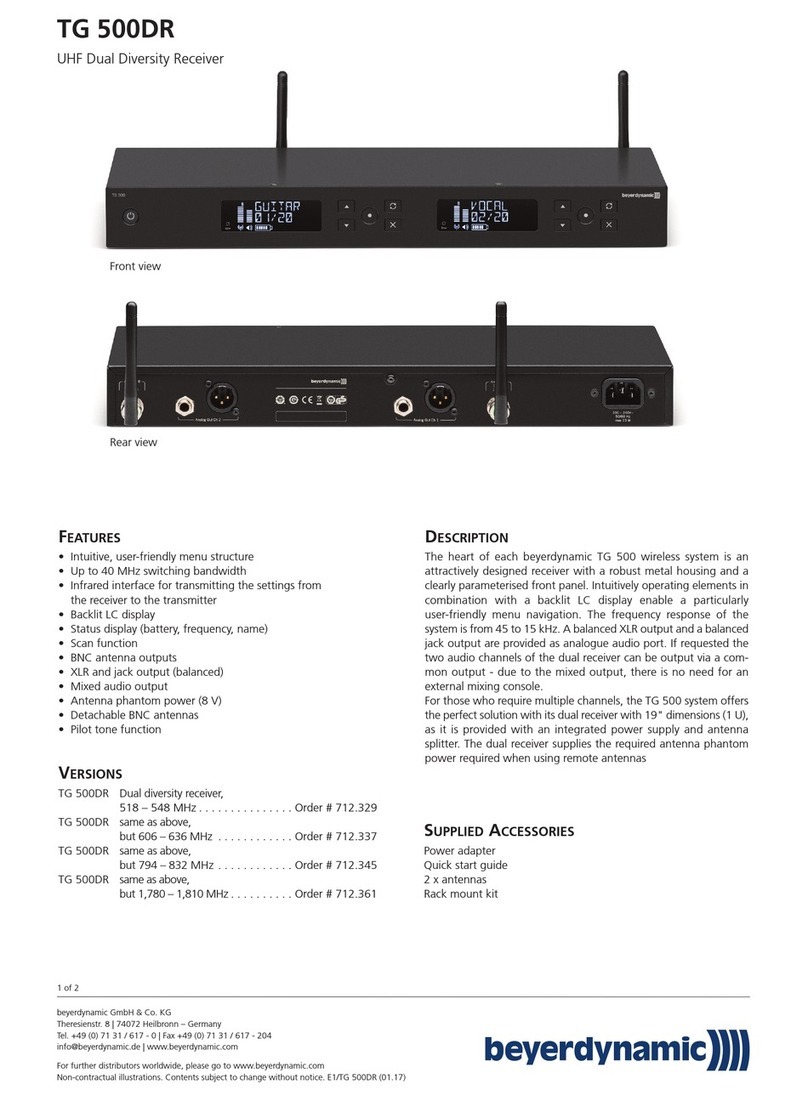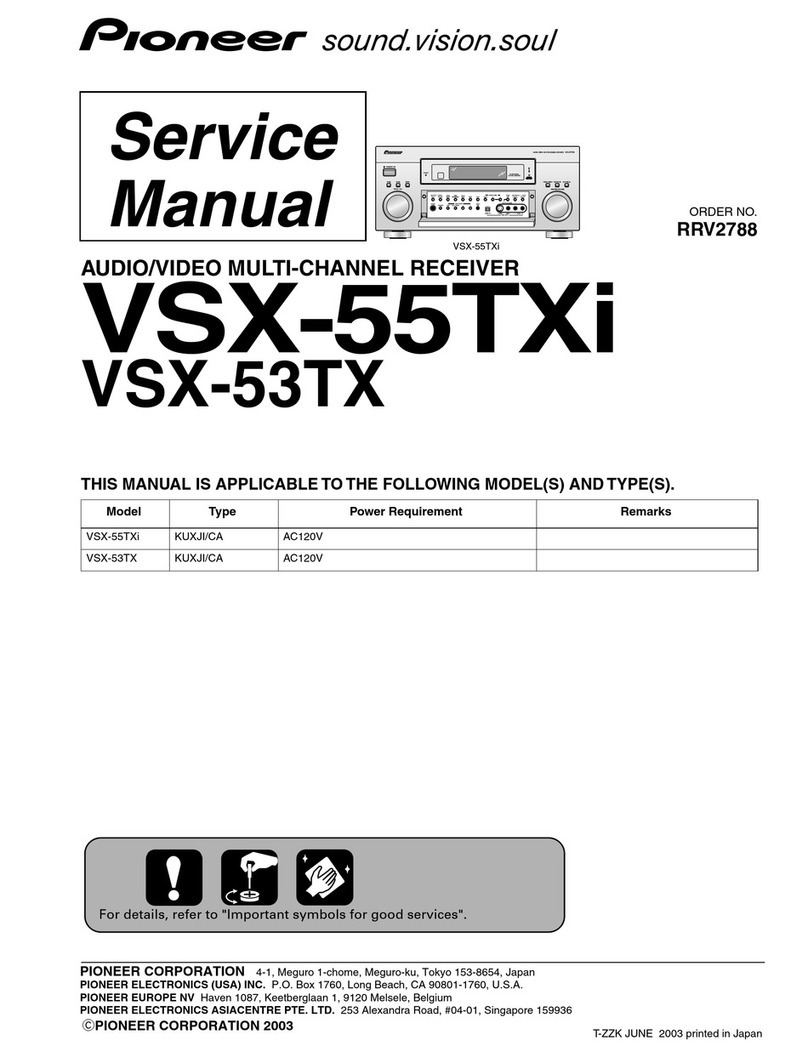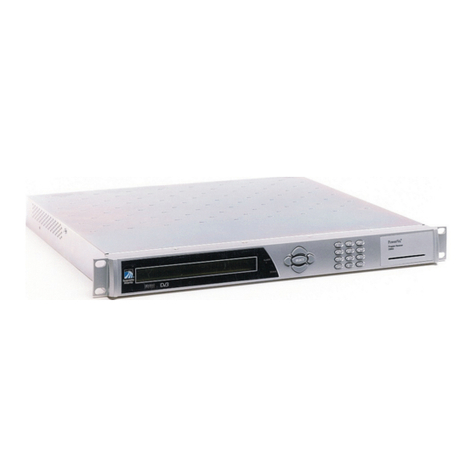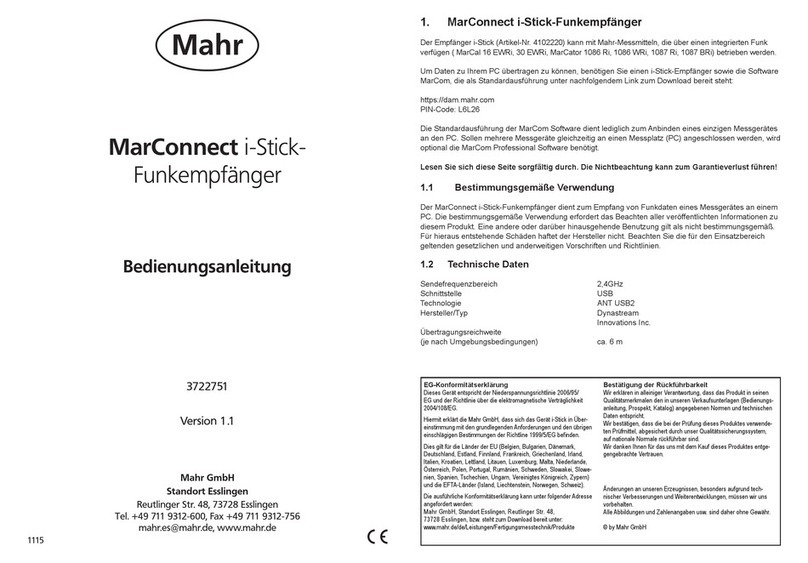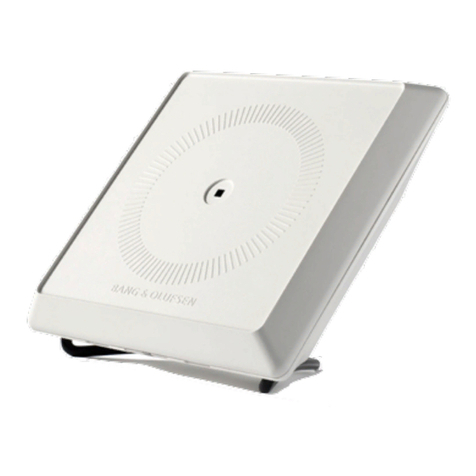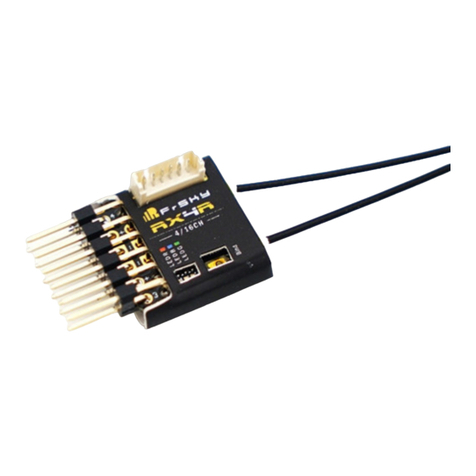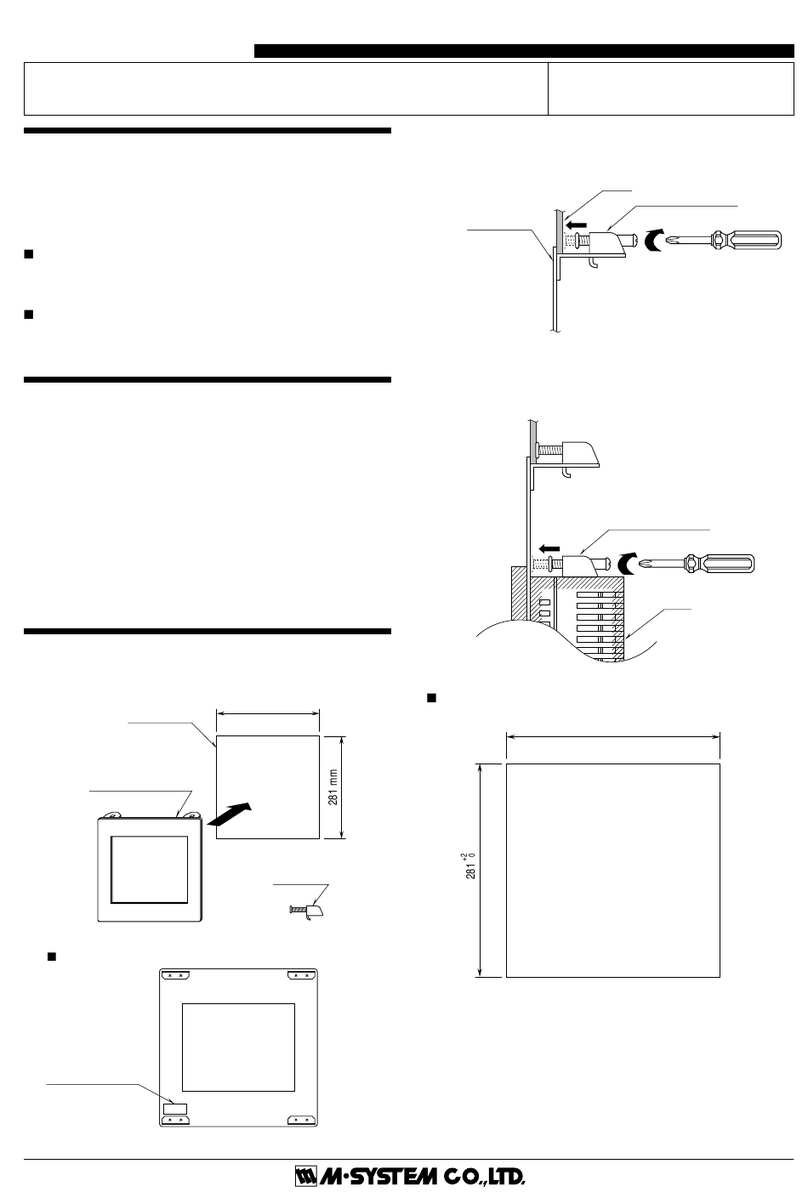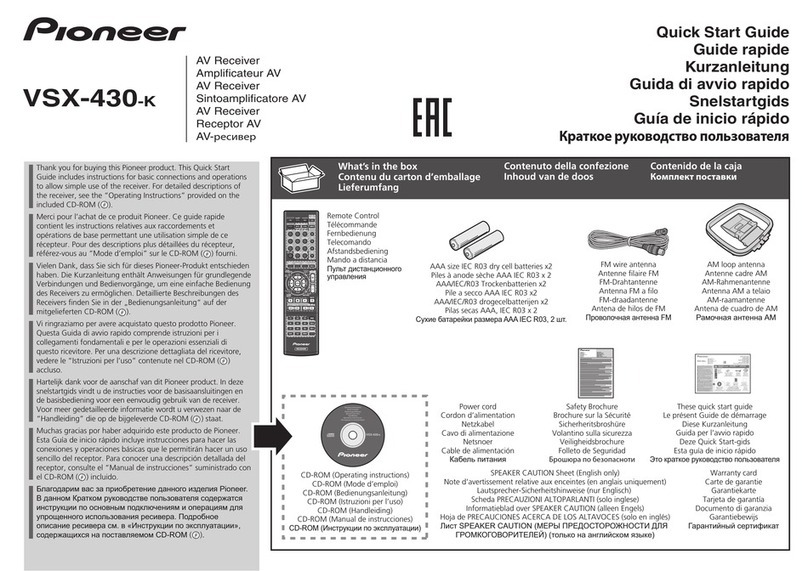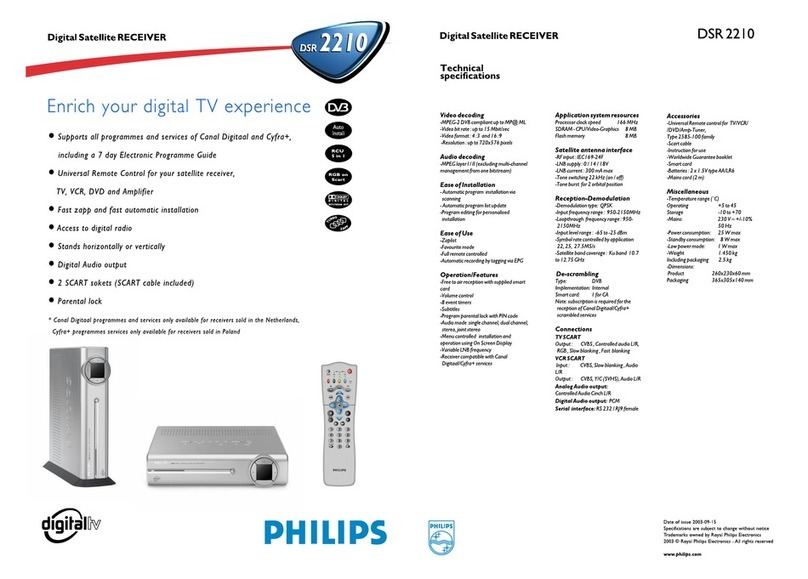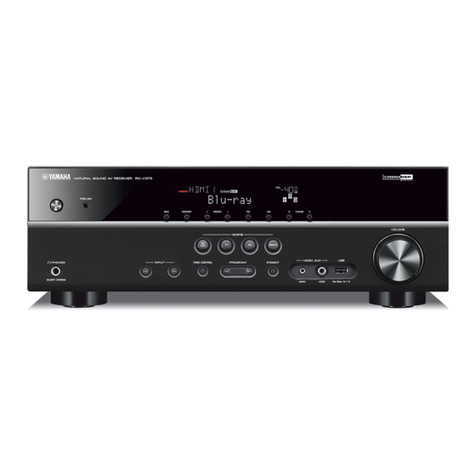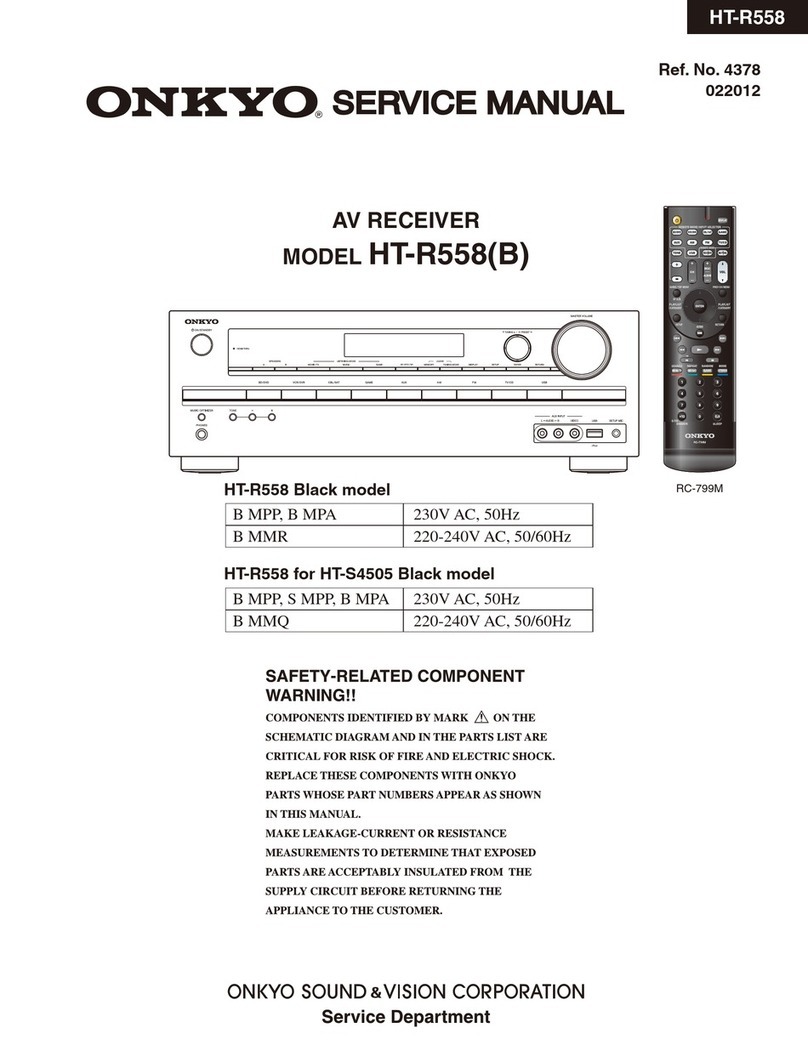Cobra 89XLR User manual

Cobra
89XLR
40-Channel
Solid
State
Citizens
Band
2-Way
Radio
Base
Station
Cobra Communications Product
Group
6460
W.
Cortland Street
Chicago,
Illinois
60635

INSTRUCTION
MANUAL
for
Cobra
89XLR
40-Channel
Citizens
Band
Solid
State
2-Way
Radio
Base
Station
Cobra Communications Product Group
DYNASCAN CORPORATION
6460
W.
Cortland Street
Chicago, Illinois 60635
--------

TABLE
OF
CONTENTS
Page
Section
I:
Introduction
Frequency Range . . . . . . . . . . . . . . . . . . . . . . . . . . . . . . . . . . . . . . . . . . 4
FCC
Warning . . . . . . . . . . . . . . . . . . . . . . . . . . . . . . . . . . . . . . . . . . . . . 5
Section II: Specifications
Section III: Installation
Location
................................................
.
Base
Station Antenna
......................................
.
Mobile Operation/Emergency Power Operation
..................
.
Public Address
...........................................
.
Remote Speaker
..........................................
.
Alternate Microphones and Installation
........................
.
Section IV: Operation
A.
Control Functions
B.
Indicator Functions
.....................................
.
C.
Operating Procedure
to
Receive
............................
.
D.
Operating Procedure
to
Transmit
...........................
.
Section V: Maintenance and Adjustment
.........................
.
Appendix
6
8
8
9
9
9
lO
14
17
17
18
19
Ten Code . . . . . . . . . . . . . . . . . . . . . . . . . . . . . . . . . . . . . . . . . . . . . . . . 20
A Few Rules That Should
Be
Obeyed . . . . . . . . . . . . . . . . . . . . . . . . . . .
21
How Your
CB
Can Serve You . . . . . . . . . . . . . . . . . . . . . . . . . . . . . . . . .
22
Use
Channel 9 for Emergency Messages Only . . . . . . . . . . . . . . . . . . . . . 23
Warranty Service Instructions . . . . . . . . . . . . . . . . . . . . . . . . . . . . . . . . . . . . 24
Limited 90-Day Warranty . . . . . . . . . . . . . . . . . . . . . . . . . . . . . . . . . . . . . . . 24
2

THE
CB
STORY
The Citizens Band lies between the shortwave broadcast and 10-meter
amateur radio bands, and was established by law in 1949. The Class D two-way
communications service was opened in 1959. (CB also includes a Class A
business band and Class C remote control frequencies.) Acquiring the Class D
license requires no detailed technical or Morse-code knowledge that
is
required
for a
"Ham"
license.
In March, 1975, the FCC reduced the cost
of
a
CB
license from $20
to
$4.
One license can
be
good for any number
of
sets used by a given family or
business. Once you receive your Class D license for
your
equipment, anyone may
use it.
For
example, though the equipment must be licensed to someone over 18
years
of
age, a child can use the equipment to talk to another child, or
an
employee can use the equipment
as
part
of
his or her routine services. However,
final responsibility
of
legal operation rests with the
CB
licensee.
NOTE
FCC regulations permit only "transmissions" (one party
to
another)
rather than "broadcasts"
(to
a wide audience). Thus, advertising
is
not allowed on
C'B
channels because it
is
broadcasting.
HAVE
A GOOD
DAY
TODAY
AND
A BETTER
DAY
TOMORROW!
3

Section
I
Introduction
FREQUENCY
RANGE
The COBRA 89XLR provides high level trouble-free performance in the
Citizens Radio Service which
is
comprised
of
the following frequency
assignments: Channel Frequency Channel Frequency
Channel
in
MHz
Channel
in
MHz
1 26.965
21
27.215
2
26.975
22
27.225
3 26.985
23
27.255
4 27.005
24
27.235
5 27.015
25
27.245
6 27.025 26 27.265
7 27.035 27 27.275
8 27.055 28 27.285
9 27.065 29 27.295
10
27.075 30 27.305
11
27.085
31
27.315
12
27.105 32 27.325
13
27.115 33 27.335
14 27.125 34 27.345
15
27.135 35 27.355
16 27.155 36 27.365
17 27.165 37 27.375
18 27.175 38 27.385
19
27.185 39 27.395
20 27.205
40
27.405
To obtain maximum performance from your COBRA 89XLR, please read
carefully the following descriptions and operation instructions.
These frequencies are generated and accurately controlled by a phase lock
loop (PLL) circuit, comprised
of
the latest state-of-the-art integrated circuit
technology, thereby ensuring high reliability and excellent frequency stability on
the above channels.
4

FCC
WARNING*
1.
Operation
of
this equipment requires a valid Station License issued by the
Federal Communications Commission. Do
not
transmit with your equipment
until
you
have received
your
License. Illegal operation can result in severe
penalties.
Be
certain
you
have read Part 95
of
the FCC Rules and Regulations.
before operating your station.
2. License applications are to be made on FCC Form 505, available from
your
nearest field office.
(A
copy
of
this form
is
included with your new COBRA
transceiver.)
3. You are required
to
maintain a current copy
of
Part 95
of
the FCC Rules,
as
part
of
your
Station records. Copies
of
Part 95 are available from the
Superintendent
of
Documents, GPO, Washington. D.C. 20402.
4. Your Station License
is
to be posted
in
accordance with paragraph 95.101
of
the Rules and
an
executed Transmitter Identification Card (FCC Form
452-C)
is
to be
attached
to each transmitter. (A copy
of
this form also
is
included with your new COBRA transceiver.)
5. FCC Rules require
that
ALL transmitter adjustments
other
than those
supplied
by
the manufacturer
as
front panel operating controls, be made
by,
or
under the supervision of, the holder
of
an FCC-issued
lst
or
2nd Class
Radio Operator License.
6. Replacement or substitution,
of
crystals. transistors, regular diodes or any
other
part
of
a unique nature. with parts
other
than those recommended
by
Dynascan, may cause violation
of
the technical regulations
of
Part 95
of
the
FCC Rules,
or
violation
of
the Type Acceptance requirements
of
Part 2
of
the
Rules.
*Excerpted from Part 95
of
the FCC Rules and Regulations.
5

Section
II
Specifications
GENERAL
Channels
40.
Frequency
Range
26.965
to
27.405
MHz.
Frequency Control Phase
Locked
Loop
(PLL) synthesizer.
Frequency
Tolerance 0.005%.
Operating
Temperature
Range
-30°C
to
+50°C.
Microphone Plug-in
type;
dynamic.
Power Source 117 VAC
nominal;
13
.8
VDC nominal.
Power
Consumption
(117
VAC)
Current Drain (13.8 VDC)
Size
Weight
Antenna
Connector
Semiconductors
Meter I
Meter 2
(Positive
or
negative ground.)
Transmir:
AM
full
mod.,
55 watts.
Receive:
Squelched,
25
watts.
Full audio,
25
watts.
Transmit:
AM
full
mod., l.5A
DC
(nominal).
Transmit:
AM
full
mod.,
60VA
AC
(nominal).
Receive: Full audio
output,
l
.2A
DC
(nominal; no signal
0.5
A
DC
(nominal).
534
11
Hx
13-3/8"Wx
12-5
/8"0.
10 pounds.
UHF,
S0239.
24
transistors,
30
diodes, 6 integrated
circuits.
Illuminated; indicates relative
power
output
and
received signal strength.
Illuminated, indicates standing wave ratio
and
level
of
modulation.
6

TRANSMITTER
Power
Output
Modulation
Frequency Response
Output
Impedance
Output
Indicators
RECEIVER
Sensitivity
Selectivity
Image Rejection
IF
Frequencies
Adjacent Channel Rejection
RF
Gain
Control
Automatic Gain Control
(AGC)
Delta Tune Range
Squelch
Audio
Output
Power
Frequency Response
Distortion
Built-in Speaker
External Speaker
(Not
Supplied)
PA SYSTEM
Power
Output
External Speaker for PA
(Not
Supplied)
4 watts.
High- and low-level Class B amplitude
modulation.
300
to
3000Hz.
50 ohms, unbalanced.
Meter indicates relative
RF
output
power,
standing wave ratio and level
of
modulation.
Less
than
lµV
for 10 dB (S+N)/N.
6 dB
@.:
7KHz,
60
dB
@:
1OKHz.
50 dB.
Double conversion, 1st: 10.695MHz.
2nd:45SKHz.
-
70
dB.
Variable
type.
Less
than
10 dB change in audio
output
for
inputs from 10
to
500,000
microvolts.
±l .5KHz continuously adjustable.
Adjustable, threshold less than
lµV.
4 watts.
300
to
3000Hz.
Less and 10%
ca
3 watts @1
OOOHz.
8 ohms, round.
8 ohms; disables internal speaker when
connected.
4 watts
into
external speaker.
8 ohms; when PA-CB switch
is
in PA, the PA
speaker also monitors the receiver, separate
jack
provided.
7

Section
Ill
Installation
LOCATION
Prior
to
beginning operation
of
the transceiver, a basic installation must be
prepared. Installation
of
the transceiver itseif
is
a rather simple procedure.
In selecting the location for
the
unit, two basic factors must be considered.
1.
Access
to
a 120V,
60
Hz power source.
2. The location must be convenient for running the antenna lead-in cable
if
an outside antenna installation
is
proposed.
BASE
STATION
ANTENNA
Since
the
maximum allowable power
output
of
the
transmitter
is
limited
by
the FCC, the antenna
is
the most
important
factor affecting transmission
distance. Only a properly matched antenna system will allow maximum power
transfer from
the
50-ohm transmission line
to
the
radiating element.
The recommended method
of
antenna tuning
is
to
use an in-iine watt-meter
or VSWR bridge
to
adjust the antenna tuning for minimum reflected power on
channel 21.
The radio may be used with any type
of
50-ohm base station antenna. A
ground plane vertical antenna
will
provide the most uniform horizontal coverage.
This type
of
antenna is best suited for communication with a mobile unit.
For
point-to-point operation where
both
stations are fixed, a directional beam will
usually increase communicating range since this type
of
antenna concentrates
transmitted energy in one direction. The beam antenna also allows the receiver
to
"hsten"
in only one direct10n thus reducmg interfering signals.
Antenna height
is
an
important
factor when maximum range
is
desired.
Keep the antenna clear
of
surrounding structures or foliage. FCC regulations for
base station antenna height are:
8

1.
Omni-directional antennas may
not
be higher
than
60
feet above the
groun<l when using a tower, mast or pole, and no higher than
20
feet
above an existing structure.
2. Beam antennas may
not
be higher than 20 feet above the ground when
using a tower, mast, pole,
or
an existing structure.
These are only general regulations applicable
to
most
but
not
all parts
of
the
nation. Locations near airports and some military installations are subject to
different rules; therefore, it
is
best to contact
your
nearest Federal Communica-
tions Commission office for information regarding
your
specific area.
MOBILE
OPERA
TI
ON/EMERGENCY
POWER
OPERATION
lt
is
possible to operate
the
COBRA 89XLR from an external 13.8 VDC
power supply for emergency power conditions or from an automobile battery
for mobile operation. The COBRA 89XLR
is
supplied with a polarized plug for
operation
on
an external
DC
supply.
The negative lead
is
black.
The positive lead
is
red and has an in-line fuse holder
as
an integral part
of
the positive lead.
PUBLIC
ADDRESS
An external 8-ohm, 4-watt speaker may be connected to the PA speaker
jack located
on
the rear panel when the transceiver
is
used
as
a public address
system. The speaker should be directed away from
the
microphone
to
prevent
acoustic feed-back. Physical separation or isolation
of
the microphone and
speaker must be used when operating the PA at high-output levels.
REMOTE
SPEAKER
The external speaker jack (EXT. SPKR.) on the rear panel
is
used for
remote receiver monitoring. The external speaker should have 8 ohms impedance
and be able
to
handle
at
least 4 watts.
When the external speaker
is
plugged in, the internal speaker
is
disconnected.
9

ALTERNATE MICROPHONES AND INSTALLATION
For best results, the user should select a low-impedance dynamic type
microphone
or
a transistorized microphone. Transistorized type microphones
have a low
output
impedance characteristic. The microphones must be provided
with a four-lead cable. The audio conductor and its shielded lead comprise
two
of
the leads. The third lead
is
for transmit/receive control and the fourth lead
is
the speaker return lead which disables the speaker during transmit. The
microphone should provide the functions shown in schematic below.
4-Wire
Mic
Cable
Pin
Number
2
3
4
Mic
Cable Lead
Audio Shield
Audio Lead
Transmit Control
Receive Control
1/8"
STRIP
a TIN
Fig. l . Microphone cable preparation.
If
the microphone
to
be used
is
provided with pre-cut leads, they must be
revised
as
follows:
1.
Cut leads so that they extend 7I16" beyond the plastic insulating jacket
of
the
microphone cable. (See Fig. 1.)
10

2. All leads should be
cut
to
the same length. Strip the ends
of
each wire
I
/8"
and tin
the
exposed wire.
Before beginning the actual wiring, read carefully
the
circuit and wiring
information
provided with the microphone
you
select.
Use
the
minimum
head
required in soldering the connections. Keep the exposed wire lengths
to
a
minimum
to
avoid shorting when the microphone plug
is
reassembled.
To
wire the microphone cable
to
the plug provided, proceed
as
follows (see
Fig. 2):
1.
Remove the retaining screw.
2. Unscrew the housing from the pin receptacle body.
3. Loosen the
two
cable clamp retainer screws.
4.
Feed the microphone cable through the housing, knurled ring and
washer
as
sll\)wn in Fig. 2B.
KNURLED
RING HOUSING
~
\
PIN
CABLE
CLAMP
RECEPTACLE RETAINER SCREW
(2)
RETAINING
SCREW
A.
MICROPHONE CONNECTOR
ASSEMBLY
WASHER
I
~
B.
MICROPHONE CONNECTOR DISASSEMBLED
FOR
WIRING
Fig.
2.
Microphone plug
wiring.
11

5.
The wires must now be soldered
to
the pins
as
indicated
in
the above
wiring tables.
If
a
vise
or clamping tool
is
available it should be used to
hold the pin receptacle body during the soldering operation,
so
that
both
hands are free
to
perform the soldering.
If
a
vise
or clamping tool
is
not available, the pin receptacle body can be held in a stationary
position by inserting it into the microphone jack
of
the front panel.
The numbers
of
the pins
of
the microphone plug are shown
in
Fig. 3,
as
viewed from the back
of
the plug. Before soldering the wire to the pins,
pre-
tin
the wire receptacle
of
each pin
of
the plug.
3 2
..
')!?(
··
~~~
··
.
~
. ·
4: . .
..
:
·:
.,
Fig
. 3. Microphone plug pin numbers viewed from rear
of
pin receptacle.
Be
sure that the housing and the knurled ring
of
Fig.
2 are pushed back
onto
the microphone cable before starting to solder.
If
the washer
is
not captive to the pin receptacle body, make sure that
it
is
placed on
the threaded portion
of
the pin receptacle body before soldering.
If
the microphone jack
is
used
to
hold the pin receptacle during the
soldering operation, best results are obtained when the connections
to
pins 1 and 4 are made first and then the connections to pins 2 and 3.
Use
a minimum amount
of
solder and be careful to prevent excessive
solder accumulation on pins, which could cause a short between the pin
and the microphone plug housing.
6.
When
all soldering connections to the pins
of
the microphone plug are
complete, push the knurled ring and the housing forward and screw the
housing onto the threaded portion
of
the pin receptacle body. Note the
location
of
the screw clearance hole in the plug housing with respect
to
the threaded hole in the pin receptacle body.
When
the housing
is
completely threaded
onto
the pin receptacle body, a final fraction
of
a
turn either clockwise or counterclockwise may be required to align the
12

screw hole with the threaded hole in the pin receptacle body. When
these are aligned, the retaining screw
is
then screwed into place to
secure
the
housing to the pin receptacle body.
7. The two cable clamp retainer screws should now be tightened to secure
the housing to the microphone cord.
If
the cutting directions have been
carefully followed, the cable clamp should secure to the insulating
jacket
of
the microphone cable.
8. Upon completion
of
the microphone plug wiring, connect and secure
the microphone plug in the transceiver.
13

Section IV
Operation
L
I @
A.
CONTROL
FUNCTIONS
1.
DYNAMIKE. Adjusts the microphone gain in the transmit and
PA
modes. This controls the gain to the
extent
that
fu
ll
talk power
is
available several inches away from the microphone. In the Public
Address (PA) mode the control functions
as
the volume control.
2.
OFF
/ON
VOLUME.
Tum
clockwise to apply power
to
the unit and to
set the desired listening level.
3.
SQUELCH.
This control
is
used
to
cut
off
or eliminate receiver/
background noise in the absence
of
an incoming signal. For maximum
receiver sensitivity the control should be adjusted only
to
the point
where the receiver background noise or ambient background noise
is
eliminated.
Tum
fully counterclockwise then slowly clockwise until
receiver noise disappears. Any signal
to
be received must now be
slightly stronger than the average received noise. Further clockwise
14

rotation will increase the threshold level which a signal must overcome
in order
to
be heard. Only strong signals will be heard at a maximum
clockwise setting.
4. TONE. This control
is
used
to
shape the audio response to the
operators preference.
Base
is
increased by counterclockwise rotation
and trebel
is
increased by clockwise rotation.
S.
RF
GAIN. Adjust
as
required
to
optimize the signal. This control
is
used primarily
to
optimize reception
in
strong signal areas. Gain
is
reduced
by
counterclockwise rotation
of
the control.
6. DELTA TUNE. For normal operation set the control
to
the center
position. This feature has several uses and can greatly enhance receiver
operation. First,
if
a received signal
is
slightly
off
frequency, the
Delta-Tune control can be operated as required
to
optimize the received
signal level. The effectiveness
of
the Delta-Tune feature under these
conditions can be observed either
by
listening for a more readable signal
at the speaker
or
by
noting the S-meter reading when the Delta-Tune
control
is
operated. Another effective application
of
this control
is
in
eliminating adjacent channel interference.
If
it
is
verified that an
exceptionally
high
level signal from an adjacent channel
is
creating
interference
on
the channel being used, the Delta-Tune can be used to
minimize
or
eliminate the interference. Operate the control
as
required
to
obtain minimum adjacent channel interference.
7.
SWR
CAL CONTROL. In order for you
to
achieve maximum radiated
power and the longest range,
it
is
important
that
your antenna be
in
good condition, properly adjusted and matched to your transceiver.
The built-in
SWR
(standing wave ratio) meter lets
you
easily measure
your antenna condition. To operate this function, connect your
antenna
to
the transceiver antenna
output
connector. Select a channel
near the middle
of
the band such
as
21, or the channel you plan
to
use
most frequently. Turn the power
on
and set the meter function switch
to
the CAL position. Press and hold the microphone push-to-talk
button;
using the
SWR
CAL control, adjust the meter
to
read the CAL
position indicated on the meter face. Then, without releasing the
microphone
button,
switch the meter function switch
to
the
SWR
position and read the
SWR
indicated. The lower the figure, the better,
with l being ideal. Generally speaking, readings up
to
3 are acceptable,
but
over 3 indicates that you are losing radiated power and antenna
adjustment may be advisable.
15

8.
CHANNEL
SELECTOR.
This
switch selects any one of
the
forty
Citizens
Band
channels desired. The selected channel appears
on
the
LED
readout directly above the Channel Selector knob. Channel 9
has
been reserved by the
FCC
for
emergency communications involving the
immediate safety of
life
of individuals
or
immediate protection of
property. Channel 9
may
also
be used to render assistance to a
motorist.
9. OFF/ANL
SWITCH.
In
the
ANL
position, the noise reduction circuits
of the Automatic
Noise
Limiter
are
activated.
IO.
PA/CB
SWITCH
. Selects the mode
of
operation.
Jn
the
CB
position. the
PA
function
is
disabled and the unit
will
transmit
and
r
eceive
on
the
selected frequency.
The
PA
function should not
be
used
unless
a
PA
speaker
is
connected.
To
use
this
PA
feature. a speaker
having
a
voice
coil
impedance of
8 ohms and a po
wer
handlingcapability ofat least four watts should
be
used.
This
speaker must
be
plugged
into the
PA
SPKR
jack
at
the
rear
of the transceiver.
With
the
PA
speaker connected
as
outlined
previously,
be
sure that there
is
physical separation between the
microphone and the speaker itself. If the speaker
is
located
close
to the
microphone, acoustic feedback
will
result when the public address
system
is
operated at
high
volume.
Some
experimentation
will
determine the minimum amount
of
isolation required
for
a
given
sound
level
from the public address system.
NOTE
PA
volume
is
controlled by adjusting the
DYNAMIKE
KNOB
to
the
desired volume.
11.
SWR/SWR
CAL/RF-MOD
SWITCH.
In
the
RF-MOD
position, the S-RF
and
MOD
meters
are
activated.
When
in
the
SWR
or
SWR
CAL
positions the
SWR
meter
is
activated.
In
the latter two
cases,
the
operation
is
described
in
the above
SWR
CAL
CONTROL description.
12.
PRESS-TO
-TALK
MICROPHONE.
The receiver
and
transmitter
are
controlled
by
the press-to-talk switch
on
the microphone.
Press
the
switch and the transmitter
is
activated; release switch to
receive.
When
transmitting, hold the microphone two inches
from
the mouth and
16

speak clearly in a normal "voice". The radios come complete with a
low-impedance 500-
ohm
dynamic microphone. For installation instruc-
tions on
other
microphones, see next section, "ALTERNATE MICRO-
PHONES AND INSTALLATION.''
B.
INDICATOR
FUNCTIONS
S-METER.
Swings proportionally
to
the strength
of
the incoming signal.
RF
METER.
Swings proportionally to the
RF
output
power. When
transmitting, the RF -% MOD switch must be in the
"RF"
position and the
OFF-CAL-SWR switch must be in the
"OFF"
position.
MODULATION
METER.
Swings proportionally to the degree
of
modula-
tion. When transmitting, the RF -%
MOD
switch must be in the %
MOD
position, and the OFF-CAL-SWR switch must be in
the
"OFF"
position.
SWR
METER.
Measures the ratio
of
standing wave voltage
of
the antenna
system. Used to properly adjust the length
of
the antenna, and
to
monitor
the quality
of
the coaxial cable and
all
RF electrical connections.
If
there
is
any degradation whatsoever in any
of
the above, due to humidity, salt
spray, vibration or corrosion. the SWR meter reading will rise, thereby
indicating
that
a problem exists.
To calibrate, switch
to
the
"CAL"
position transmit
by
pressing the mike
switch, and adjust the SWR control to the
"CAL"
mark on the meter then
switch
to
"SWR"
position for the SWR measurement.
CHANNEL
INDICATOR.
The selected channel appears on the LED readout
directly above the channel selector knob.
C.
OPERATING
PROCEDURE
TO
RECEIVE
1.
Place the CB/PA switch in the
CB
position.
2. Turn the set ON by turning the VOLUME control clockwise, until a
click
is
heard.
3. Set the VOLUME for a comfortable listening level.
17

4. Set the Channel selector switch to the desired channel.
5.
Set the
RF
GAIN
fully
clockwise.
6.
Set the
DELTA
TUNE
control to the center position.
7.
Listen
to
the background
noise
from
the
speaker. Turn the
SQUELCH
control
slowly
clockwise, until the
noise
JUST
disappears. (No
signal
should
be
present.)
Leave
the control at this setting. The
SQUELCH
is
now properly adjusted.
The
receiver
will
remain quiet until a
signal
is
actually received.
Do
not advance the control too
far,
or
some
of the
weaker
signals
will
not
be
heard.
D.
OPERATING
PROCEDURE
TO
TRANSMIT
1.
Select the desired channel
of
transmission.
2'.
Set the
DYNAMIKE
control
fully
clockwise.
3.
If
the channel
is
clear, depress the push-to-talk switch
on
the
microphone and speak
in
a normal
voice.
The
S-RF
meter
will
indicate relative power output
and
the modulation
meter
will
indicate percentage
of
modulation
as
you speak into the
microphone.
CAUTION
Be
sure
the antenna
is
properly connected to the radio before
transmitting. ProlongeJ transmitting without
an
antenna
or
a poorly
matched antenna could
cause
damage
to the transmitter.
18

Section V
Maintenance and Adjustment
i
ne
LU.ijKA
~~A.LK
lransce1ver
is
aes1gneo
spe~mcauy
ror
use
a~
a
oase
station and
may
also
be
used
in
mobile installations.
The
use
of
all
solid circuitry
f~:SUlU>
111
llE;iil Wl::lf;ill aHU lug;1 l<;;;luuii.i.l}'.
3l1vuJ.~
a
;.;;_:1
..
rn
..
u'-'-u1,
''-l-'~"'-"
t'"«-'
only with identical parts.
Do
not substitute. Refer to the schematic
diagram
and
parts list.
NOTE
If
the
perform~ncf'
cif'~crihNi
in
thf' OPERATION and
MATNTEN
ANCE
AND
ADJUSTMENT
section
is
not obtained,
review
the operating
instrudiom
to insure that pruper procedures
were
followed.
If
a
problem still exists, refer to
WARRANTY
SERVICE
INSTRUCTIONS
on
the last
page
of
this manual.
FCC
WARNING
Federal
law
requires that adjustment
of
the radio frequency section of
this transceiver may nut
be
made
by
a
CitiLem
Band
0pcrat0r.
Only
a
United States licensed First
or
Second
Class
commercial
license
holder
may
tune the transmitter section of this transceiver,
per
FCC
part 95
section 95.97d
..
19
Table of contents
Other Cobra Receiver manuals
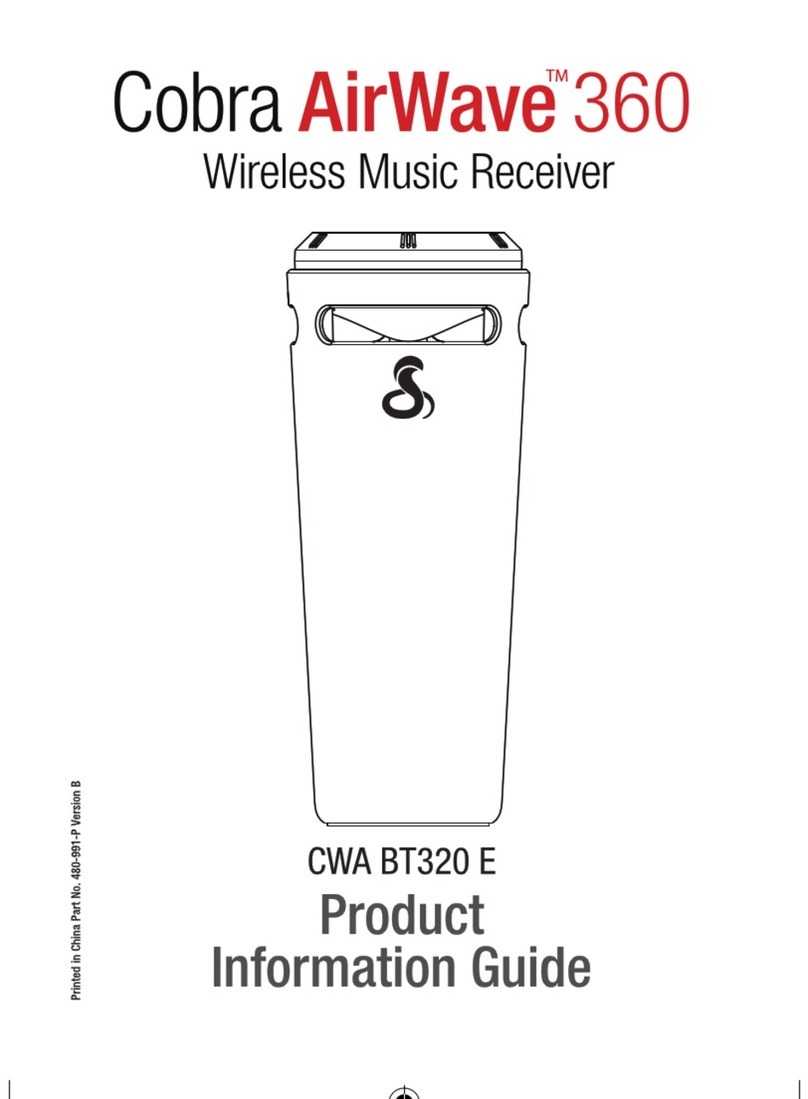
Cobra
Cobra AirWave 360 Installation and operation manual
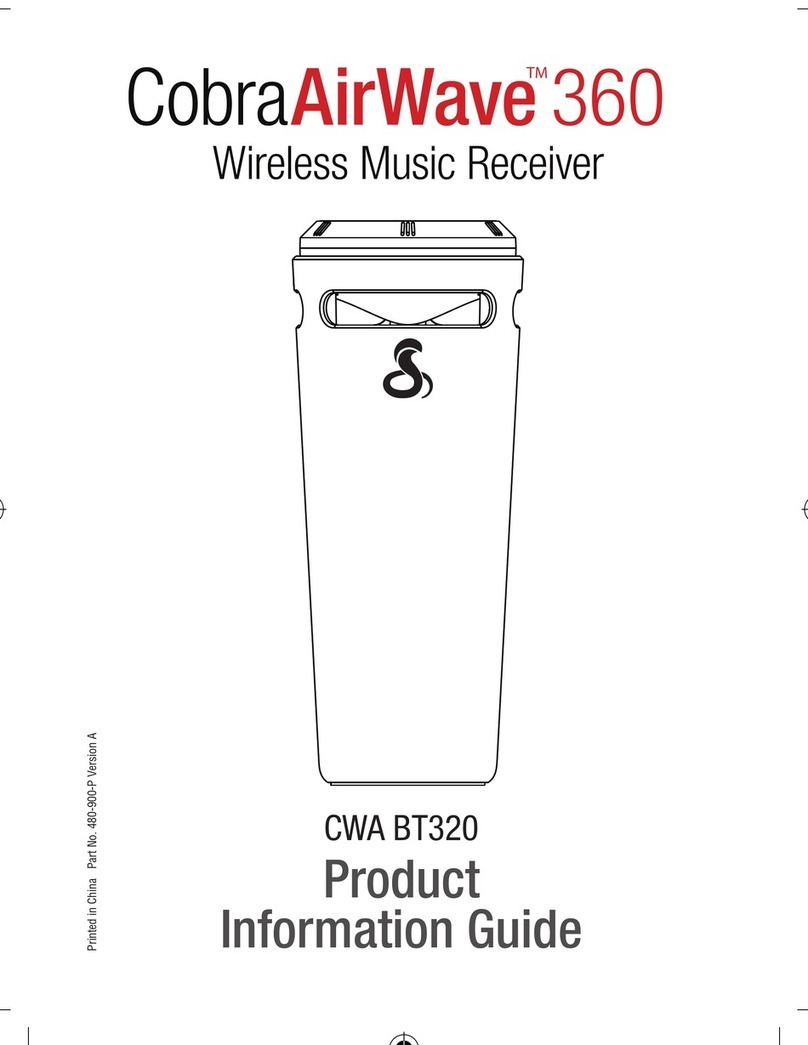
Cobra
Cobra Air Wave 360 Installation and operation manual
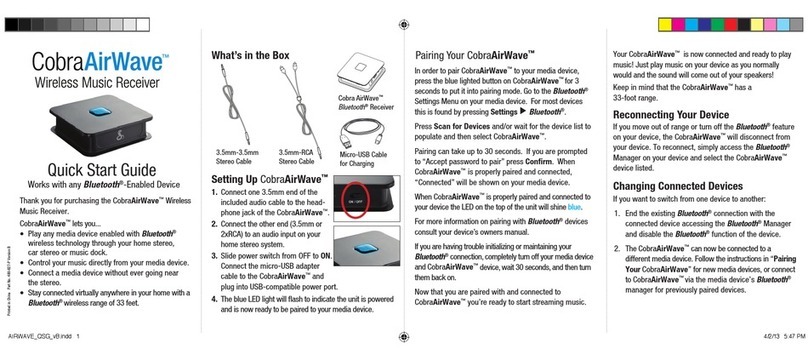
Cobra
Cobra AirWave CWA BT150 User manual
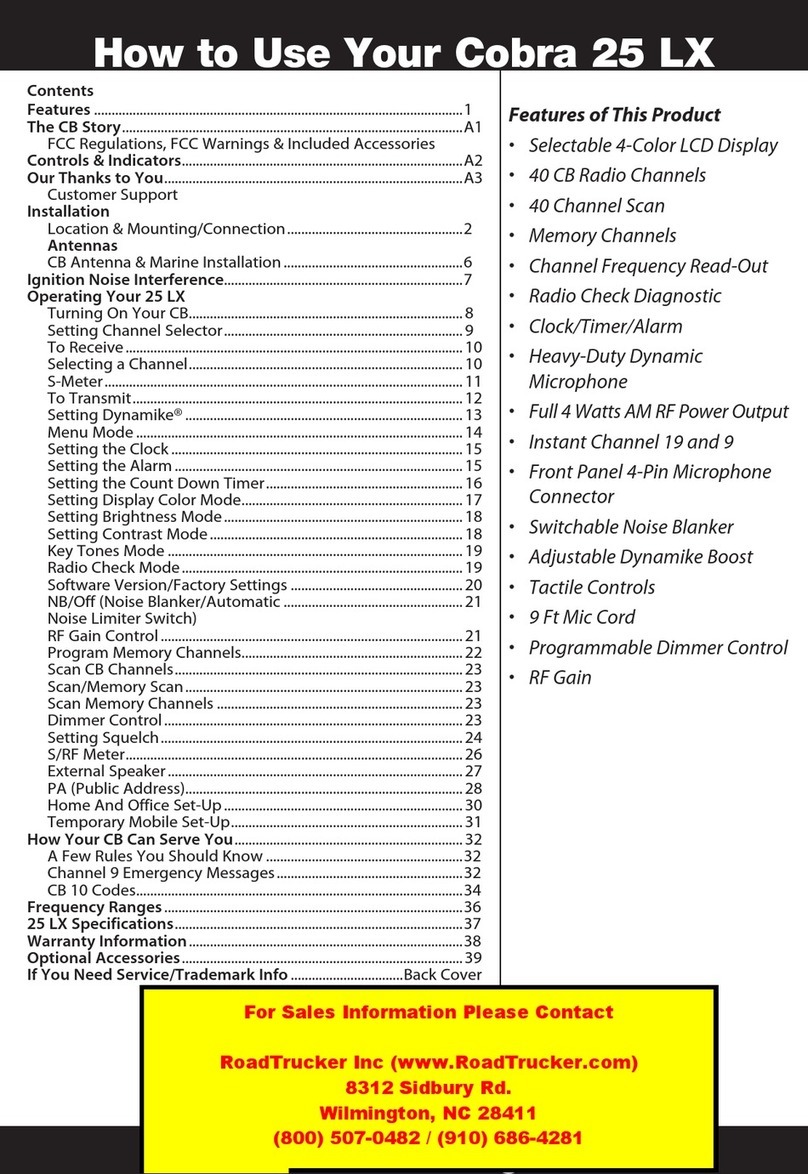
Cobra
Cobra 25 LX User manual

Cobra
Cobra AirWave User manual
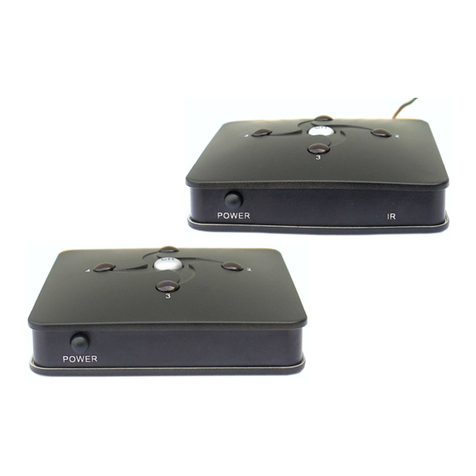
Cobra
Cobra Archimede User manual

Cobra
Cobra GPS 100 S User manual

Cobra
Cobra AirWave CWA BT 160E User manual

